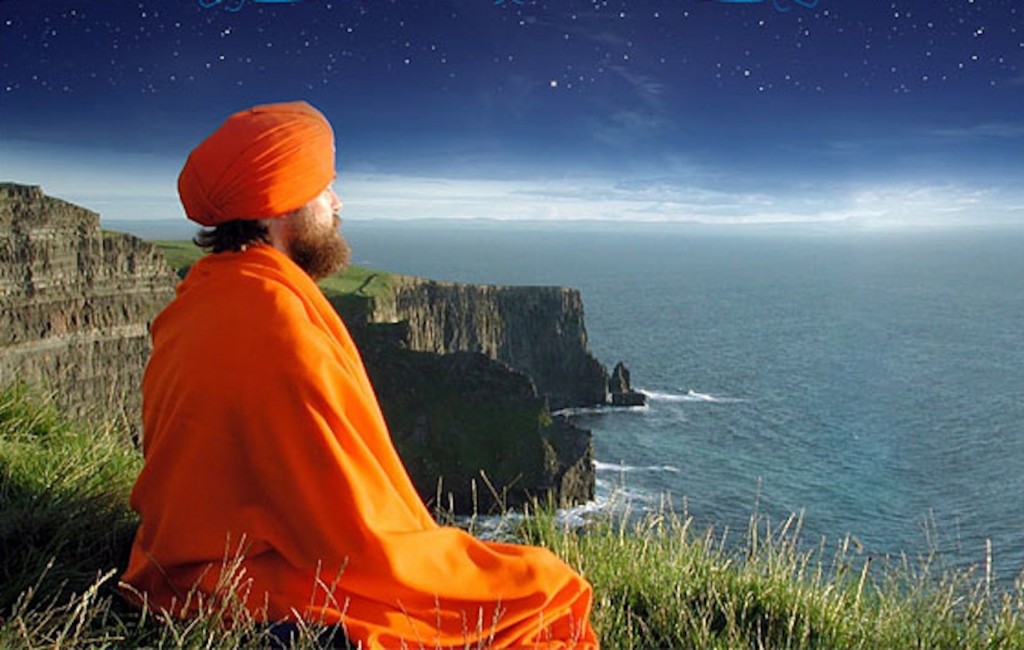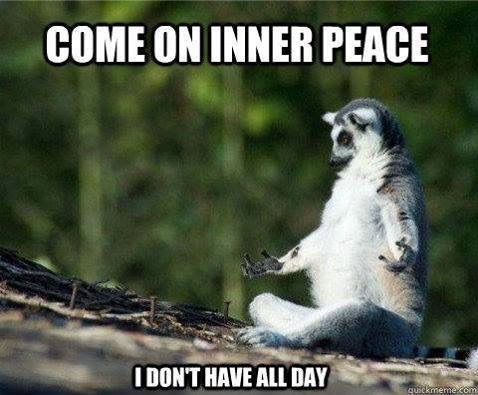Where & How to Sit
Where and How to Sit
When you were a kid in school, when your teacher told you to ‘sit up straight’, what did she actually want you to do?
Gold star if you answered, ‘pay attention’. In other words, ‘concentrate‘. Sitting straight aids concentration.
In meditation you should sit with a straight back, with your hands in your lap, thumbs touching and fingers interlocked. Close your eyes and curl your tongue so that the underside of the tip touches the upper palate. Relax and close your jaw. Breathe naturally through your nose.
You may have seen pictures of yogis meditating in the Lotus Posture, with their legs apparently tied in some kind of knot. This is actually an excellent posture for meditation, if you can do it, but most people can’t. As an alternative you can sit in the half lotus, with one leg resting on the other, or crossed legged. Or if you are not comfortable sitting on the floor, you don’t have to torture yourself. You can sit in a straight backed chair. If you do choose to sit on the floor you’ll probably be much more comfortable if you place a large cushion under your backside. This alters the angle of your lower back and reduces stress on your legs – you’ll be surprised what a difference it makes.
Meditation begins with withdrawing our attention from the outside world.
When we close our eyes we shut off visual stimuli. We choose a quiet place so we won’t be distracted by sounds. Folding our hands and crossing our legs eliminates extraneous touch– like a turtle withdrawn inside its shell. The tongue curled and pressed against the roof of the mouth deactivates the taste buds. If we have chosen our place well, smells will not bother us. Simply sitting still in such a posture without moving is in itself a powerful sensory withdrawal. By disengaging the mind from the senses, we are disconnecting it from the external world and giving ourselves an opportunity to dive deep inside. Motionlessness of the body leads to tranquility of mind. When we close the doors of the senses, we get the chance to explore what is behind those doors.
Mantra Meditation
The Basics
Every daily lesson includes a guided meditation recording. This will enable you to start meditating from day one.
The recording starts with music to induce a meditative mood. The music accompanies the singing of a sanskrit ‘mantra’. A mantra is a word or phrase, usually in Sanskrit.
This universal mantra, Baba Nam Kevalam, roughly translates as ‘Love is All There Is’. When you listen to and then silently focus on the mantra the resonance of the sound and the uplifting meaning lead you into a state of deep peace and happiness. You’ll learn more about why and how this all works as you go through the course.
Meditation Tip
Keeping your spine straight and body quiet may be challenging, but it fuels the mind with the energy needed for take-off. A straight back increases the flow of blood to the brain (very important during meditation), while inducing fuller breathing which increase the oxygenation of the blood. A straight back stimulates the subtle vital force in the body, which travels up the spine during meditation, known as chi or ki in China and Japan (as in Tai Chi or Ai-ki-do), and prana in India.
“In my travels I spent time with a great yogi. Once he said to me, ’Become so still you can hear the blood flowing through your veins.’ One night as I sat in quiet I seemed on the verge of entering a world so vast I know it is the source of all of us.” – Mirabai
Guided Meditation
Get comfortable, sit straight and enjoy the ride


